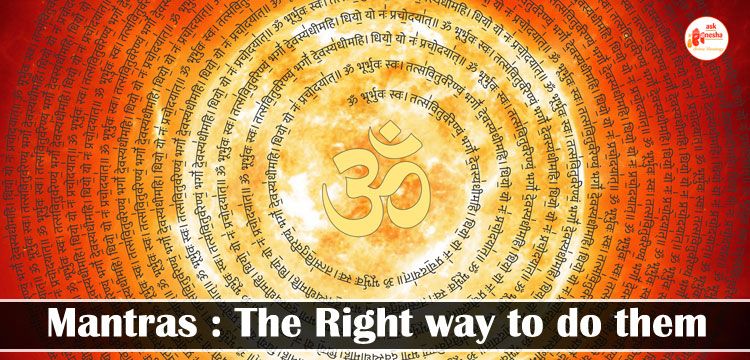Do you find chanting mantras is a wastage of time and efforts? You are wrong!
Mantras are very powerful and are based on science. Let’s learn about the science behind chanting mantras.
Mantras are the sacred utterance of the sequence of syllable, word, or group of words of Sanskrit with the power of arousing spiritual or religious emotion that is mysterious or awe-inspiring. The earliest mantras were composed in Vedic Sanskrit in India about 3000 years ago. Mantras are mathematically structured melodic verses. The word mantra has been derived from the Sanskrit root word ‘man’ which means manan or ‘to think’. Mantras include rc or the verses from Rigveda, saman from Samvedas, and yajus from Yajurveda. These mantras are metaphorical with social dimension and meaning. Speaking in simple words it means they are spiritual language and instruments of thoughts.
The most basic mantra in Hinduism is ‘Om’ which is called Pranavand is considered as the source of all mantras. This basic mantra is prefixed or suffixed with all mantras in Hinduism. Some other commonly used mantras are the Shanti mantra, the Gayatri mantras, Mahamrityunjaya mantra, etc.
Mantras are very powerful sources of transformation. Many spiritual tools and concepts can enrich and even transform life when they are understood in their true sense and with their true potential. Mantras create vibrations in our body and these vibrations induce a divine positivity in us. Concentration and focus increase with the practice of mantras. If you find it difficult to chant long mantras, then only the sound created by chanting the primordial mantras ‘Om’ can bring about a great transformation in your life. There is immense potential in the syllables and it is due to their vibratory quality.
When you chant a mantra loudly, you cannot focus on the issues on your mind, you find yourself drifting away from all the stresses in your mind. You will just have the sounds of the mantras in your mind and their repetition. This 'focussing' is the science behind the chanting of mantras. You feel light and stress-free. Positive vibes are felt and negativity is warded off.
Physiologically speaking, mantras have a great effect on our bodies. Mouth and the tongue are the most used parts while chanting mantras. There are 84 meridians on the roof of the mouth. When we chant a mantra loudly or mentally, tongue stimulates all these meridians and they in turn stimulate the hypothalamus. The hypothalamus then makes the pineal gland radiate, which then creates impulses in the pituitary gland. The pituitary gland controls the whole of the endocrine system, as the pituitary gland gives impulses all the glands of the body secrete, which makes a person feel the eternal bliss. This is the science behind chanting the mantras.




















 Translate
Translate